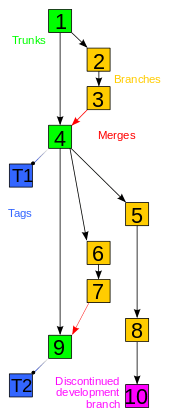Rational Team Concert
 | |
| Developer(s) | Rational Software |
|---|---|
| Initial release | June 2008 |
| Stable release | 6.0.2 (April 25, 2016) [±] |
| Preview release | Non [±] |
| Written in | Java / JavaScript |
| Available in | English, German, Spanish, French, Italian, Japanese, Korean, Brazilian Portuguese, Traditional Chinese, Simplified Chinese, Czech, Hungarian, Polish, and Russian. |
| Type | Integrated development environment |
| License | IBM EULA |
| Website |
jazz |
Rational Team Concert is a software development team collaboration tool developed by the Rational Software brand of IBM, who first released it in 2008. The software is available in both client versions, a web version, and on Cloud. It provides a collaborative environment that software development teams use to manage all aspects of their work—such as plans, tasks, revision control, build management, and reports.
Overview
Rational Team Concert is built on IBM Jazz, an extensible technology platform that helps teams integrate tasks across the software life cycle.
Rational Team Concert is built on a client-server architecture. Software development teams use it to track aspects of their work such as work items, source control, reporting, and build management in a single product. Rational Team Concert integrates with several other products, including:
- Subversion[1]
- Git[2]
- Rational ClearCase
- Rational ClearQuest
- JIRA
- Rational Quality Manager
- Rational Focal Point
- Rational System Architect
- HP Quality Center
- Rational Build Forge
- Hudson
- Jenkins
- CruiseControl
- Maven
Rational Team Concert presents an Eclipse-based client interface, a Microsoft Visual Studio client interface, and a Web interface. Additionally, since version 4.0 it provides a windows shell integration within Windows Explorer for source control of files within the Rational Team Concert repository. The client interfaces provide an integrated development environment that developers use to build and deliver artifacts. Users can access the Web interface to administer servers and projects, access project areas, browse repository information, update tasks, or read about recent events.
Software life cycle management
Rational Team Concert provides a single, integrated environment for several aspects of the software development process, including agile planning, process definition, source control, defect tracking, build management, and reporting. Users can use the software to track and manage the relationships between artifacts, promote best practices for development, and gather project information.
In the product, users create work items to track tasks, such as enhancements, defects, or plan items. Among many other things, users can include these work items in plans for specific milestones and can link work items to source code. When a user creates or changes a work item, all members in the associated team are notified.
Users can share team information in the product by tracking team activity, posting detailed information, or configuring which information is visible.
